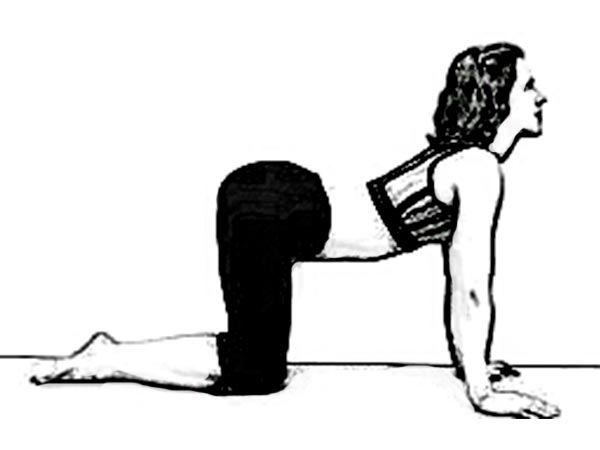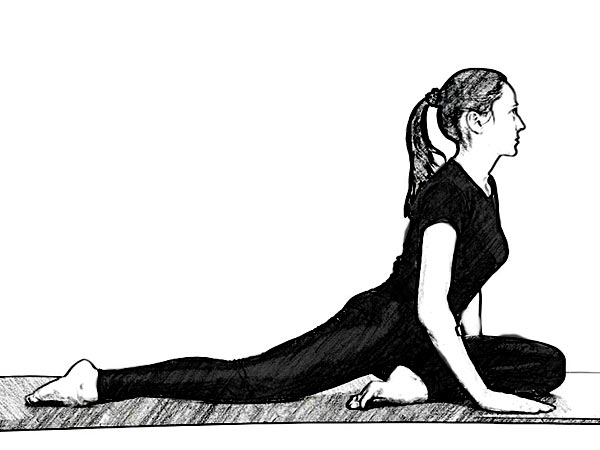Just In
- 1 hr ago

- 6 hrs ago

- 9 hrs ago

- 9 hrs ago

Don't Miss
- Sports
 Most Runs in IPL 2024, Orange Cap Holder: Top 10 Highest Run Scorers And Team-wise Top 5 Batters On April 22
Most Runs in IPL 2024, Orange Cap Holder: Top 10 Highest Run Scorers And Team-wise Top 5 Batters On April 22 - Movies
 Salman Khan To Move To New Home After Firing Incident; To Start Shooting For Sikandar With Tight Security
Salman Khan To Move To New Home After Firing Incident; To Start Shooting For Sikandar With Tight Security - News
 5 Earthquakes In 9 Minutes: Tremors Hit Taiwan's Hualien County
5 Earthquakes In 9 Minutes: Tremors Hit Taiwan's Hualien County - Education
 Telangana Inter Results 2024; How to Check Results via SMS?
Telangana Inter Results 2024; How to Check Results via SMS? - Finance
 Reliance Retail Reports Q4 Growth: Net Profit Jumps 11.7%, Revenue Up 10.6%
Reliance Retail Reports Q4 Growth: Net Profit Jumps 11.7%, Revenue Up 10.6% - Automobiles
 Top Tips – How To Charge Electric Scooters For Best Battery Life
Top Tips – How To Charge Electric Scooters For Best Battery Life - Technology
 Realme C65 5G India Launch Confirmed; Coming Under Rs 10,000
Realme C65 5G India Launch Confirmed; Coming Under Rs 10,000 - Travel
 Journey From Delhi To Ooty: Top Transport Options And Attractions
Journey From Delhi To Ooty: Top Transport Options And Attractions
Eka Pada Rajakapotasana (One-legged Pigeon Pose) To Improve Flexibility Of Hip Muscles
These days, people aren't doing any physical activity as required by the body. As a result, they are facing joint problems, which become severe over a certain period of time.
One such reason is the long hours of work at the office, which keeps you restricted to your chair only. Our hip muscles are responsible for the basic movement of the body, and it is essential to take care of them.
Improving hip mobility has become a major focus of many training programs lately, and with good reason. It helps us in walking, climbing stairs, giving support to the knees, it also helps in sitting, squatting and even sleeping.
Playing any kind of sports is directly proportional to the hip strength you're required to have to be extremely flexible.
All this has become merely an imagination due to long hours of the desk-bound jobs. Sitting most of the day stiffens the hips and can make them weaker due to prolonged positioning.
Hence, this asana helps you to come out of such a problem. Again, like other asanas, this has also been derived from the Sanskrit term "Eka" meaning One, "Pada" meaning foot, "Raja" meaning King, "Kapot" meaning Pigeon, and "Asana" meaning pose.
This asana is meant for intermediate levelers and is the best one to provide flexibility to the hip muscles and it also provides relief against sciatica.
Step-By-Step Procedure To Perform The Asana
Step 1. Start this pose by getting on to your knees like you have done in the Marjaryasana.
Step 2. Slowly, while exhaling, just get your right knee closer to touch the right wrist.

Step 3. Your knee should be bent, and get your ankle close to the groin portion. Gradually, get your right foot close to your left hand, till your toes are able to touch the left wrist.
Step 4. Now, shift your left leg back, making sure that it touches the floor. Your knee should be absolutely straight and the front foot should be touching the floor and the sole should be looking towards the sky.

Step 5. While pressing your tail bone forward, insist on pressing your right hip on the ground and lengthen your lower back.
Step 6. The more you stretch, the stronger your hip muscles will tend to become, along with obtaining good flexibility.

Step 7. Concentrate on your breathing pattern. Just inhale and exhale.
Step 8. Then, repeat the same with the other leg.
As a beginner, just start with a folded blanket or get a yoga block below your groin region to get accustomed to the pose. Gradually, try to do it without any support.
Benefits Of The Asana
•
Helps
to
stretch
the
lower
part
of
the
body
•
Stimulates
the
abdominal
organs
•
Helps
in
relieving
the
sciatica
nerve-related
pain
•
Opens
and
adds
flexibility
to
the
hips
•
Keeps
the
body
away
from
stress
and
anxiety
Caution
People
who've
undergone
an
ankle
or
leg
surgery
must
not
perform
this
asana.
Also,
remember
to
perform
this
pose
under
the
supervision
of
an
expert
if
you're
at
a
beginner
level.
-
 healthBust Bloating: 5 Exercises Every Teenage Girl Needs For A Happy Tummy
healthBust Bloating: 5 Exercises Every Teenage Girl Needs For A Happy Tummy -
 healthDelhi Air Quality: Breathing Exercises To Combat The Effects Of Air Pollution
healthDelhi Air Quality: Breathing Exercises To Combat The Effects Of Air Pollution -
 pregnancy parentingMental Health: Teaching Meditation To Kids; Benefits And Simple Techniques
pregnancy parentingMental Health: Teaching Meditation To Kids; Benefits And Simple Techniques -
 healthYoga For Abs: 5 Celeb-Inspired Poses For Sculpted Abs
healthYoga For Abs: 5 Celeb-Inspired Poses For Sculpted Abs -
 pregnancy parentingExpert Talks About The Benefits Of Prenatal Yoga For Expecting Mothers
pregnancy parentingExpert Talks About The Benefits Of Prenatal Yoga For Expecting Mothers -
 healthDoctors’ Day: The Early Indian Medicine Inventions; Its Not Just Ayurveda!
healthDoctors’ Day: The Early Indian Medicine Inventions; Its Not Just Ayurveda! -
 healthHave You Heard Of Hot Yoga? Can It Aid Weight Loss?
healthHave You Heard Of Hot Yoga? Can It Aid Weight Loss? -
 healthWhat Is The First Yoga Pose You Should Learn?
healthWhat Is The First Yoga Pose You Should Learn? -
 fashionInternational Yoga Day 2023: What To Wear For Yoga, An Easy Guide To Select Ideal Outfit
fashionInternational Yoga Day 2023: What To Wear For Yoga, An Easy Guide To Select Ideal Outfit -
 insyncInternational Yoga Day 2023: Yoga Gifts For Every Zodiac Sign
insyncInternational Yoga Day 2023: Yoga Gifts For Every Zodiac Sign -
 healthInternational Day of Yoga: What Is Laughing Yoga? How To Do It?
healthInternational Day of Yoga: What Is Laughing Yoga? How To Do It?


 Click it and Unblock the Notifications
Click it and Unblock the Notifications



